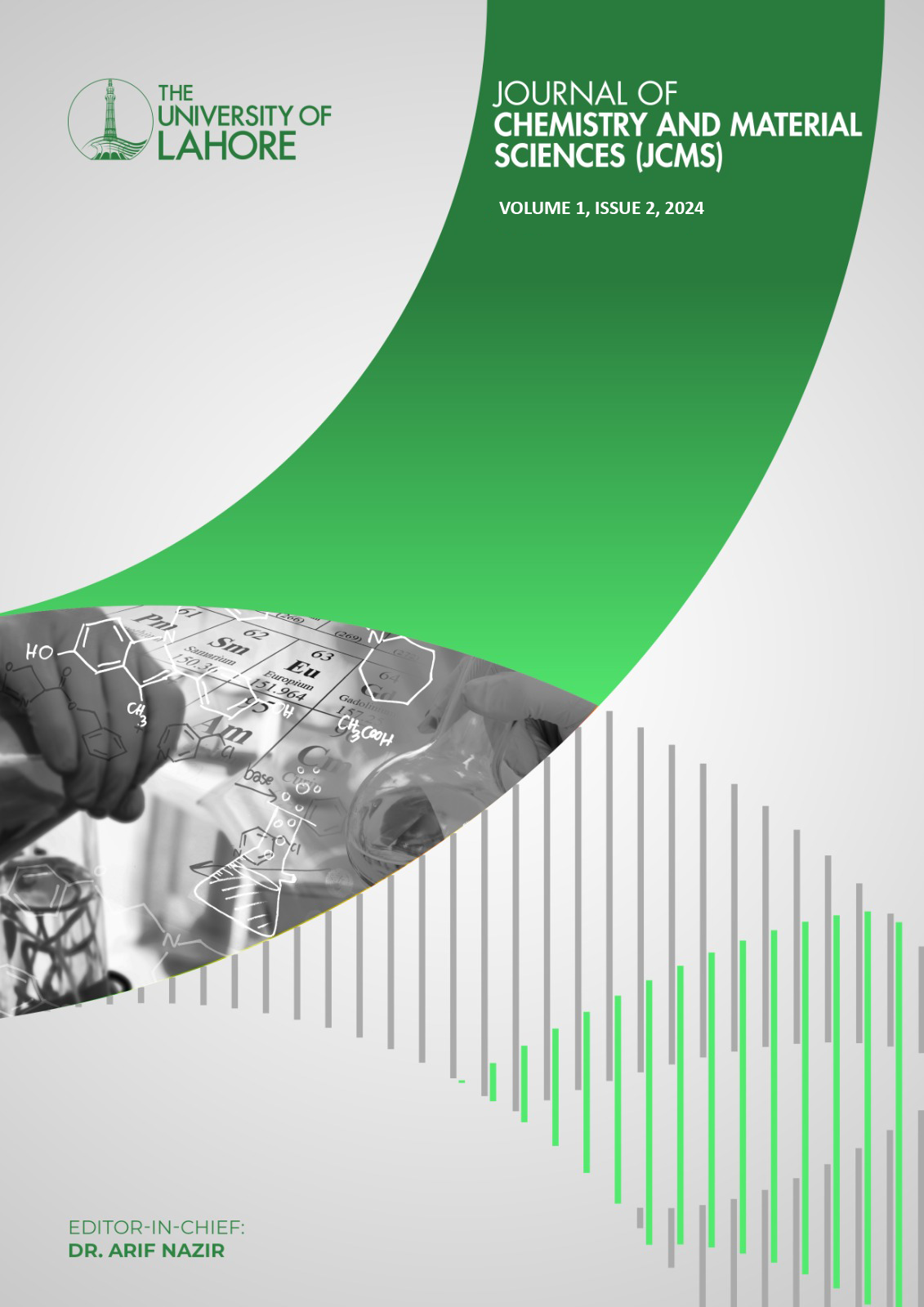The Green Synthesis of Metallic Ferrite Composites for the Removal of Textile Dyes from Wastewater: Kinetics, Equilibrium and Thermodynamics Studies
DOI:
https://doi.org/10.71120/j.chem.mater.sci..v1i2.3493Abstract
The primary source of environmental pollution is industrial dyes. The goal of the current work is to remove synthetic anionic dye from textile wastewater utilizing biocatalyst-based batch processing. The unique aspect of this work is the use of three plant extracts—Monoon longifolium, Conocarpus combretacease, and Albizia lebbeck—as reducing agents to synthesize several nano ferrites, including nickel-cobalt ferrites (M.L. NiCoFe2O3), zinc-magnesium ferrites (C.C. ZnMgFe2O3), and copper-manganese ferrites (A.L. CuMnFe2O3). Remazol Black B dye’s ideal pH was found to be in the acidic range, which was 3. The optimum results were shown at 0.01 g/50 mL dose of ferrites. At 200 mg/L, the best removal was accomplished. The maximum removal of anionic dyes was seen at 65 °C, and the temperature effect reduction on capability of biosorption of all biosorbents was observed. The pseudo second order demonstrated the reasonable fitness on biosorption kinetic data, but Langmuir biosorption isotherms provided the best match on equilibrium biosorption data. In the presence of surfactants and detergents in dye-containing water, the biosorption capability of the chosen catalyst for anionic dye was significantly decreased. Ferrite composites were characterized using FTIR, which revealed information on the shape and functional groups on dye.


